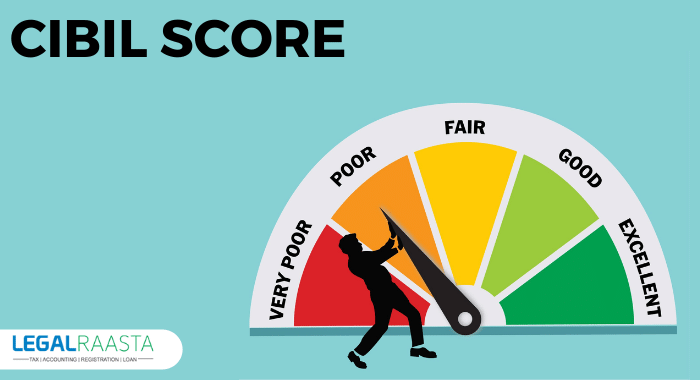Sinking Funds
Sinking funds are used to pay off a loan or debt in the future. A business that issues debt will have to pay off the debt in the future, and the sinking fund helps ease this burden.
A sinking fund is a type of savings account established for the accumulation of capital over time so as to repay the principal on an issue of debt. In the corporate world, a sinking fund is a type of bond created to repay the debt by a certain date. The sinking fund will be established in order to pay off the debt at a future time when it becomes due and payable.
Purpose of Sinking Fund
The purpose of a sinking fund is to reduce or eliminate the need for taking on additional debt or issuing bonds later on. This is accomplished by regularly putting money into a fund which is then invested to grow for later use, or simply lent out at some interest rate with the intent of having it earn enough interest to pay off the debt before time. Sinking funds are used as a method of saving up over time to pay back something that will be needed later on. A sinking fund is a type of savings account established for the accumulation of capital over time so as to repay the principal on an issue of debt.
In order to reduce future interest payments, a company may establish a sinking fund for repayment that may or may not be used as it accumulates. This would be particularly common in the case of a large purchase that can be paid for overtime, or if a company issues bonds. A sinking fund is a fund that includes funds set aside or borrowed to pay off a loan or debt. A business that issues debt will have to pay off the debt in the future, and the sinking fund helps ease the burden of repaying this debt. It’s like putting money into an account now so you can use it later on when it’s due.
Sinking funds are large enough for most companies to make substantial headway in terms of reducing debt. They are often employed in conjunction with other debt-reduction mechanisms, such as bond issues or dividends.
Why do businesses set up a sinking fund?
There are a few reasons. Businesses can use sinking funds as a way to save money on interest payments, and it’s also an effective method of giving them more time to pay off their loans. Additionally, companies with sinking funds often increase the value of their company by issuing new stock and using the resulting dividends (which would be equal to the stock price) as collateral for that loan or debt payment.
How does it work?
All that needs to happen is that there must be some level of revenue saved up in order to repay said loan/debt at any given point in time. Businesses set up sinking funds so they have trouble repaying this loan/debt on time so they can use this revenue to pay it off. As a result, the company gets some breathing room until it has to repay the loan/debt.
What are some common examples of sinking fund?
Taxes, insurance premiums, and quarterly loan payments are often considered sinking funds. Taxes help ensure that businesses have money down the road to pay taxes from future earnings, while insurance premiums make sure a business is covered in case something unexpected occurs (this is why you see your car insurance premium automatically sent out every few months). Quarterly loan payments make sure a business always has enough money saved away in order for these debts to be paid on time.
How do companies benefit from setting up sinking funds?
- The first is that it allows them to account for this revenue ahead of time so they can know just how much money they’ll have to pay off their loan/debt at any given point in time.
- Secondly, sinking funds also give these businesses more flexibility when it comes to making interest payments since they always know exactly how much money they can use to cover them (unless something unexpected happens).
- Sinking funds are often used when companies issue bonds or other types of debt. They help reassure investors that a company has sufficient resources available to pay them back. This can increase demand among potential buyers and decrease interest rates on loans taken out by businesses.
- A sinking fund may also be used when a business has excessive debt. It can help the company reduce its dependence on loans and decrease its annual interest payments in the long run. This is especially true when a business takes out multiple loans from several different lenders. In some cases, businesses use a sinking fund to pay back loans that carry a high-interest rate. High-interest loans are sometimes used to finance projects that will produce enough cash flow in the future to pay them off.
- A sinking fund can be helpful during times of financial difficulty for companies with debt obligations, such as when they are forced into bankruptcy or undervalued by bondholders. A bankruptcy filing can mean all debts are considered equal, even if they have different interest rates or repayment schedules. However, a company with a sinking fund will be able to pay down its loans more quickly and negotiate a better deal with creditors.
- Banks sometimes use sinking funds to finance large projects. They set aside the necessary money in advance and make regular payments to pay off principal and interest. Sinking fund bonds in India are usually issued by private companies to raise money for investments. If a company issues ten-year sinking fund bonds, it will invest the money received and gradually use up all of the cash over the course of the ten years, paying off its debt in full. This ensures that the company will be able to pay back all of its bondholders. Sinking fund bonds are usually issued in denominations of Rs. 100 and multiples thereof up to Rs. 1000 or more.
- A sinking fund is a legal obligation that the issuer must fulfill, and failure to do so can result in revocation of the company’s corporate status and termination of any business it may be engaged in. If a company does not have the resources to pay off bonds, it should seek a partner who has the means and can work with them to make sure that they will survive as a going concern. Sinking funds are instituted in India by the government to repay loans taken for capital works.
- The sinking fund is a method of repaying borrowed money, especially bonds or debentures, before their due date. The term “sinking fund” can also be used to refer to reserves set aside or other means used to accumulate assets that will generate the cash necessary to pay off a bond or debenture at maturity.
The sinking fund provision is in the Indian Income Tax Act and was introduced under Section 73A of the IT Act, 1961. Under this provision, an assessee can claim deduction on certain payments made towards repayment of debt (which are specified under section 80C) if such payments are made by way of creation of a sinking fund or through the transfer to a trust approved under section 11(2)(a) for the purpose.
- A sinking fund is generally used when an organization issues bonds, debentures or long-term notes that will be repaid over time. The process can involve setting up a separate bank account, known as a sinking fund, with money available to repay the debt at maturity.
- There is often an interest charge made against the sinking fund for holding it during the term of the loan. This means that if only part of a bond issue matures in any particular year, less will be required from the sinking fund and more can be paid out to the bondholders.
- The amount of money put into sinking funds is generally more than the actual sum needed, because of investment risks involved with this type of fund. If there are losses, the principal may not be repaid or could even be reduced by inflation or other economic factors.
- One reason for putting money into a sinking fund is that the extra interest represents a cost saving to the issuer, although there is an initial outlay in creating and administering it. Another reason is that interest rates are typically lower when a sinking fund is created than they will be when the debt comes due.
- Sinking funds are used to reduce or retire debt with long terms of repayment, such as mortgages and bonds.
- They are also more likely to be used when the issuer has a high degree of confidence in revenue projections, such as with government debt. This is because the organization does not want to risk having too little money on hand to repay its debts at maturity.
- Most sinking funds require that an additional amount be added each year, and this is one reason why they are popular with issuers who anticipate a large growth in revenue. Sinking funds are small amounts that companies set aside for capital repayments. This is because firms can transfer their loans into bonds to make repayment easier.
India’s banks, like other institutions in the country, need to keep a large amount of money at hand in order to be able to deal with sinking funds. The reason why this is important is that the central bank’s money supply will depend to a large extent on how much cash banks have in hand.
- In India, banks are required to set aside 1.5% of their deposits as a sinking fund, and they also need to keep government securities worth 0.05% of their deposits at hand.
This is because bonds are convertible into cash, which means that Indian banks can use them to meet their daily liquidity needs. This is why it is important for the banks to keep a certain amount of money at hand in order to be able to convert their bonds into cash when needed. If they don’t have enough money on hand, then this will result in supply shortages, which will hurt businesses.
- This is because banks control a large amount of money in India, and they can create deflationary pressure on the economy if they run out of cash. The central bank set this requirement in order to make sure that Indian banks remain liquid. This means that there would always be enough money circulating throughout the economy. In addition, banks would always have enough money to be able to pay back investors who own their commercial paper. This is a requirement set forth by the Reserve Bank of India.
- The central bank also issues these regulations so that Indian banks don’t have trouble meeting their sinking funds. In India, sinking funds are usually created by businesses to help pay off debts, such as loans and bonds.
- Loans and bonds taken out by companies must be paid back in the future. The company will try to distance itself from this obligation as much as possible by setting aside money – a fund – so that it is able to pay back the loan or bond once it comes due. This is called a sinking fund. The company creates this fund by placing money into an account and uses the interest accumulated on this account to pay off the loan or bond as time goes on. The company benefits from paying back smaller amounts over longer periods of time, since it causes less of a strain on the company’s finances.
- The sinking fund is created by setting aside money – usually a part of profits made by the company – to pay back debt at a later time. This process eases the burden of having one large debt payment and spreads it out over time, allowing for smaller payments. The funds in the account also accumulate interest, which may also help the company pay back debt.
- Companies that offer sinking fund accounts often do this to make it easier for individuals who invest in their bonds to know when they will get their money back. Individuals can buy sinking funds from a company’s stockholders or from its employees if they are not offered on the market.
- Kotak Mahindra Bank, for example, offers sinking funds to help pay off its outstanding debentures. This method allows Kotak Mahindra to buy back their debentures in installments rather than having one large payment at the end of the loan term.
Types of Sinking Funds
- Specific Purpose Sinking Fund
A company uses a specific sinking fund for a single purpose and nothing else in the unique sinking fund. As a result, it’s known as a specific purpose sinking fund.
- Callable bond sinking fund
A callable bond sinking fund, as the name implies, is a sinking fund in which a firm has a fixed call price. As a result, a callable sinking fund is available when needed.
- Purchase back sinking fund
When a firm wants to buy back a bond, it uses a purchase back sinking fund. A bond can be purchased from bondholders at two different prices: market price and sinking fund price.
- Regular Payment Sinking Fund
A regular payment sinking fund is used to pay the trustee and other creditors on a regular basis.
What are some disadvantages of setting up a sinking fund?
Since there’s less money available, companies might decide not to spend as much on capital projects due to not having enough funding for them. Though this isn’t necessarily negative since capital projects can be risky and sink companies with no return on investment. Also if no one really invests in the company it might be hard to find additional capital and this could lead to bankruptcy.
Conclusion:
Sinking funds are simply a schedule of payments that helps businesses pay off their debts or loans ahead of time, while also giving them more flexibility over when they do so. They’re usually set up for taxes, insurance premiums, and quarterly loan/debt repayments.
In conclusion, a sinking fund is a fund that includes funds set aside or borrowed to pay off a loan or debt. A business will usually use these funds as an extension of past profits in order to pay back loans and bonds over time so as not to strain its finances. Individuals can also buy sinking funds from companies who offer them as a security.
Sinking funds are usually most effective when they reach maturity. The interest rates of the loans taken to establish a sinking fund can also affect its usefulness. If, for example, the rate is higher than the rate at which the company is expected to pay off its debt, it would not be worth setting up a sinking fund.
Generally, a sinking fund effort will be abandoned if it is not working out as planned. The business may need to increase the size of the fund or adjust its repayment schedule. A slow or weak economy can also affect a sinking fund’s success. If cash that could have been invested in the fund is being used to maintain operations, for example, the fund will be unable to repay debt in the future.
Related Blogs:










